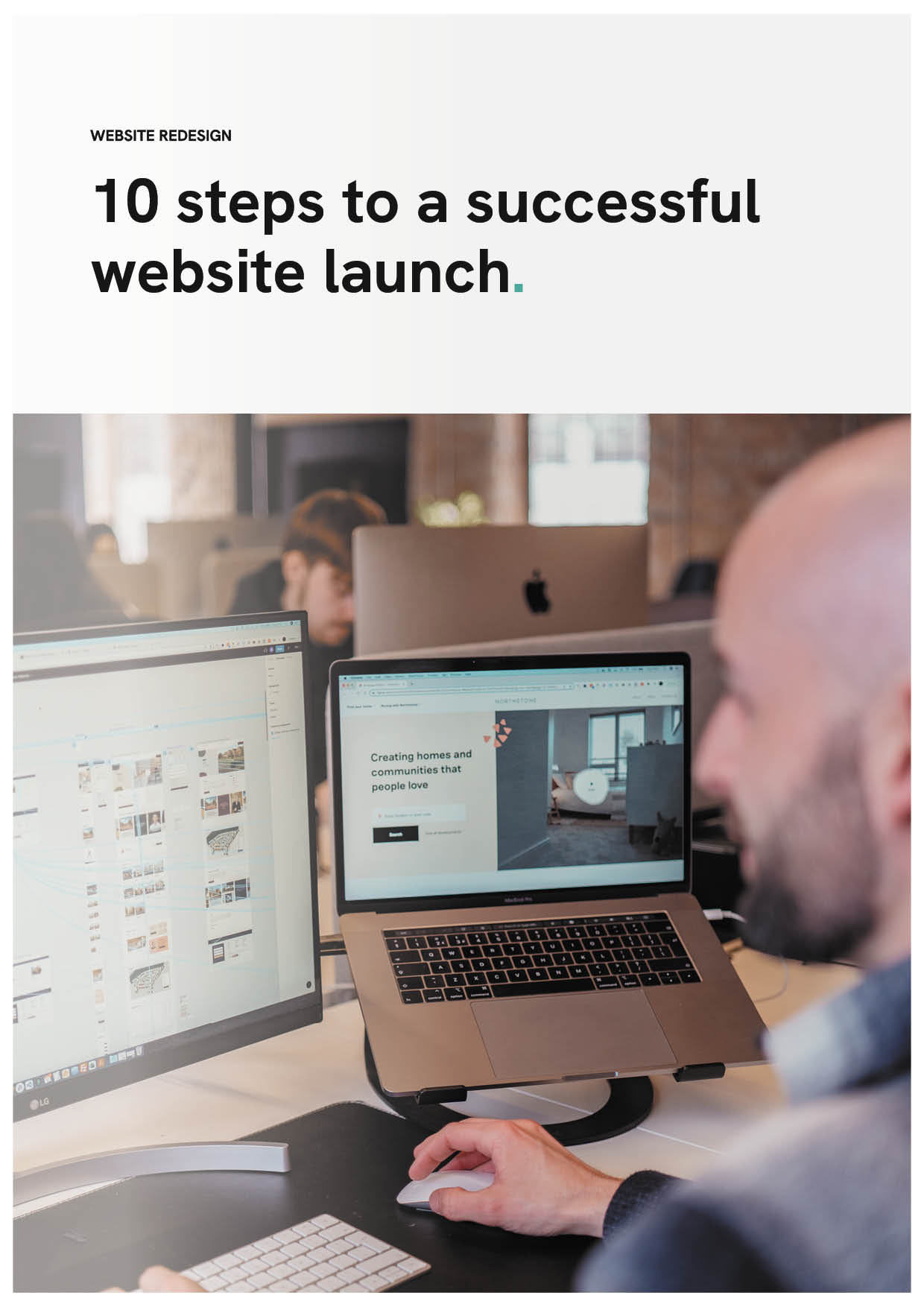Your visual identity has to be on point.
Manufacturing branding and the art of building a strong brand in an overcrowded and competitive market cannot be underestimated. For manufacturers, your brand doesn’t just help you stand out; it conveys trust, quality, and reliability before you’ve even had a conversation.
Whether you’re speaking to procurement leads, partners, engineers, or contractors, buyers are more likely to choose a trusted name and brand over other options that are on the table that look and feel the same.
That trusted name isn’t established through a single campaign or a clever slogan; it’s built consistently over time, with a clear purpose and messaging.
No time to read this article, why not listen to the audio conversation.
Branding isn’t just about your logo or colours – it is about your core values, messaging and how you present yourself at every turn.
Treat your brand like a person, if this person were your closest friend, what values would you share? Is this someone you would trust to do business with? Ultimately, would you want to commit to this brand long-term?
When your visuals, messaging, and tone reflect your values – like sustainability, transparency, technical excellence, or how you support your teams and community – you create a brand that feels both real, honest and human.
Make a brand people want to work with and one they want to return to.
Our experience at Red-Fern, as a manufacturing branding agency, is that companies who bring their mission, values, and people into the spotlight experience newer and returning customers, and more importantly, longer-term growth.
Strong, consistent branding doesn’t just get you noticed; it builds and sustains loyalty, strengthening partnerships and giving people a reason to choose you, even when cheaper or noisier options are out there.
Today’s manufacturers are expected to stand for more than just profit!
How do you create a brand identity that stands out and stays top of mind in the competitive world of manufacturing branding?
To be successful, it is important to identify the distinctions between the different sectors when building a manufacturing brand.f leading high-value technical conversations that advance the deal. In a world where buyers do their homework, your reps need to be not just sellers, but advisors.
1. What is your brand purpose, and how do you communicate it?
Your products are key to your brand, but they are not the whole story. Today’s buyers, whether they’re engineers or procurement directors, want to understand your purpose – why you do what you do, and what drives you to do it.
Understand and define your brand’s purpose by clearly outlining your mission, values and vision. What are you committed to? Innovation? Sustainability? World-class quality and ethical practices?
Being clear about all of this (at the heart of your company) will set the foundation for every brand decision you make, so go deep with these values and build your brand on their foundations.
Manufacturing businesses that lead with purpose build much stronger, emotional connections, which are critical to the success of long, complex B2B buying cycles.
2. Know your target audience
Effective branding starts with knowing exactly who you’re speaking to. Different customers have different needs. For example, an OEM (original equipment manufacturer) buyer will prioritise precision and reliability, while an architect will focus more on aesthetics or sustainability.
Using data analytics and AI tools, you can gain insights and conduct market research to map your audience’s expectations, challenges, and buying processes.
Understanding your target audience will enable you to create direct but meaningful content, portraying experiences that are relevant, valuable and personal.
3. Create a consistent and up-to-date visual identity
Having a visual brand is important, and effectively promoting it consistently across social platforms and other methods of interaction with your brand will build recognition and, more importantly, trust.
In 2025, leading manufacturing brands favour clean, modern visuals characterised by the following:
- Simple, distinctive logos
- Single-colour or bold, refined colour palettes
- Multimedia assets with a consistent theme – video intros or sonic branding headed by recognisable sounds or jingles)
- Consistency doesn’t just look good – it feels good, making it easier for your audience to get to know, trust and remember you.
4. Lead with authenticity
Today’s B2B buyers are wary of slick sales pitches. They look for authenticity through genuine stories, real people, and proven expertise.
Highlight customer success stories to showcase your team. Share behind-the-scenes processes or innovative practices. Avoid corporate buzzwords and focus on authenticity to win the attention and trust of your clients consistently.
Manufacturers that show the human side of their brand will create much stronger emotional connections and will stand out much more in what is a very technical and sometimes impersonal industry.
5. Make digital channels work harder for your manufacturing brand
Your brand identity needs to shine bright online, not just in boardrooms or trade shows. It needs to stand out from the rest. A strong digital strategy will secure your positioning and allow you to reach buyers earlier in their research phase.
Focus on:
- LinkedIn for thought leadership and B2B engagement (proven to be the best platform for manufacturing leaders to be present)
- SEO to ensure your brand appears during key buying moments
- Content marketing to tell your story and educate your audience
- Investing in paid media to drive targeted brand visibility
How about building an omnichannel approach, with a seamless experience across all channels to strengthen the brand?
An omnichannel approach gives a consistent, connected experience for your brand across every platform – from your website and social media to sales conversations and in-person events.
It builds trust and strengthens brand recognition, keeping your business front of mind throughout the customer journey.
Examples of an omnichannel approach:
- Website: with clear branding, consistent messaging, and easy navigation throughout
- Social media: use the same tone of voice, visuals, and key messages across LinkedIn, Instagram and Facebook
- Email marketing: craft personalised, story-led updates matching your brand style and tone
- Trade shows/events: have branded elements at in-person experiences that mirror your digital presence (e.g. booth design, pop-up banners, messaging)
- Sales teams: ensure your teams are using clear, concise and consistent messaging when speaking to prospects
- Customer Service: support teams that reinforce the brand values and message
6. Be a champion of sustainability and ethics
Today’s manufacturing brands must embrace sustainability. Buyers, investors, and regulators increasingly prioritise companies that demonstrate environmental, community and social responsibility.

Be transparent about your sustainability goals and achievements. Back claims with solid data, other evidence and certifications where possible. Weave ethical practices into your brand story, not as an aside but as a core part of your identity.
Brands that lead on sustainability build deeper trust and future-proof their reputation.
7. Involve your employees
Your employees aren’t just your workforce – they’re your brand’s most credible representatives.
Internal branding – from training to individual or team recognition – helps employees to understand and promote brand values easily and accurately.
When your people believe in the brand, it shows externally through their customer service, product quality, and spreads to every client interaction.
Get your teams involved to humanise your brand. Share their stories on social media, include them in your marketing plans, and show appreciation for how they play their part in your brand story.
8. Make it personal
Manufacturers can stand out by offering tailored experiences – whether that’s recommending the right product for a customer’s particular needs or creating content that speaks directly to their challenges.
Using AI and real-time data to better understand customer needs can help you to adapt messaging and content or your offerings. It helps to continually innovate and evaluate your brand, keeping it fresh and memorable, while also being responsive to any market changes.
9. Make it easy for distributors to represent you
Your brand identity doesn’t stop at your website or social media, either – it needs to guide customers through the entire sales journey, going as far as the distributors or partners through whom your products are sold.
The challenge? Many distributors handle multiple brands and don’t always have the time or training to fully understand yours.
Without a clear grasp of your unique story or value, they will deliver generic or inconsistent messaging. Worse, they could focus on more familiar brands in their portfolio.
This can lead to:
- Missed opportunities when customers ask technical questions
- Weak brand awareness at the point of sale
- Your product being positioned as a commodity, not a solution
To protect your brand, it’s essential to give your distributors the tools they need, with clear product messaging, easy-to-digest brand guides, training resources and co-branded marketing materials.
In short, your brand identity should be easy to understand and promote for your team and anyone selling on your behalf.
Trade pressures and brand identity
While global trade tensions mount through 2025, with volatile tariffs between the US and key manufacturing territories, businesses have to steer through deeply uncertain waters.
These conditions can impact pricing, supply chains, and both short and long-term forecasting.
In this context, brand identity is a key stabilising force, and far more than a useful marketing tool. When buyers face such fickle conditions, with rising costs and shifting suppliers, a trusted brand brings solidarity, together with assurances of credibility and consistency.
In short: if pricing becomes unpredictable, brand identity becomes your security and leverage.
Creative tactics for lead generation and brand authority in manufacturing
To build a strong brand identity and stand out in the competitive manufacturing sector, B2B companies need to go beyond just having a polished website or logo.

Here are some key creative tactics manufacturers are using to drive leads, build authority, and maintain consistency across their social and video channels:
1. Thought leadership content
Manufacturers can position themselves as industry leaders by creating high-value content that educates and informs. This includes publishing white papers, in-depth case studies, technical blogs, and expert insights. By offering solutions to common industry challenges or discussing trends like automation or sustainability, manufacturers not only showcase their expertise but also establish trust with potential clients.
Tactics for success:
- Industry-specific blogs and articles that address pain points of target clients.
- Guest posts or webinars featuring recognised experts to elevate credibility.
- Case studies showcasing successful project outcomes or partnerships.
2. Video marketing and virtual tours
Video content is a powerful tool for manufacturers to visually demonstrate their products, processes, and company culture. From 360-degree product tours to behind-the-scenes footage of manufacturing processes, video allows potential clients to see your capabilities firsthand.
Tactics for success:
- Product demo videos highlighting key features, use cases, and benefits.
- Customer testimonial videos showcasing success stories and real-world applications.
- Behind-the-scenes footage to humanise the brand and show the craftsmanship that goes into each product.
- Live streaming of industry events, trade shows, or product launches to engage audiences in real-time.
3. Engaging social media campaigns
Social media is not just a platform for brand awareness but a powerful lead generation tool. For manufacturers, it’s essential to create a content strategy that aligns with their business goals while speaking directly to their target audience’s needs.
Tactics for success:
- LinkedIn lead generation ads targeting key decision-makers in industries that align with your product offerings.
- Industry-specific hashtags to increase visibility in relevant conversations.
- Shareable infographics and educational posts that simplify complex manufacturing processes or product benefits.
- Interactive content, such as polls, Q&As, and product demos, to foster engagement and interaction with potential leads.
4. Consistent brand messaging across channels
One of the biggest challenges manufacturers face is ensuring consistency across all touch points, whether it’s their website, social media profiles, or video content. Maintaining a clear and cohesive narrative ensures that potential customers have a unified brand experience.
Tactics for success:
- Brand guidelines that define tone, messaging, visuals, and color schemes for consistency across all channels.
- Cross-channel storytelling where the brand’s mission, values, and vision are woven into every piece of content, from blog posts to social media updates.
- Content calendars that ensure timely, consistent posting and alignment with business priorities.
5. Leveraging user-generated content
Encouraging customers to share their experiences through reviews, social posts, or photos is an excellent way for manufacturers to enhance their brand authenticity. User-generated content (UGC) acts as social proof and encourages others to consider the brand.
Tactics for success:
- Incentivise satisfied customers to share their feedback and experiences via social media or video reviews.
- Feature UGC in marketing campaigns, such as reposting customer photos or videos showcasing the product in use.
- Create contests or challenges that encourage customers to share their product experiences, further driving engagement and brand visibility.
By combining these creative tactics, manufacturers can generate qualified leads, establish brand authority, and ensure that their narrative remains consistent across all digital channels. These strategies not only support business growth but also lay the groundwork for a sustainable and recognisable brand identity that resonates with their audience.
Top 10 FAQs manufacturers face when evolving a brand for modern-day B2B audiences
1. How do we modernise our brand without losing our legacy?
Many manufacturers face the challenge of staying true to their roots while updating their brand to appeal to modern B2B audiences. The key is to blend heritage with innovation, ensuring that brand values, quality, and trust are emphasized while incorporating contemporary design, messaging, and digital elements.
2. What role does digital transformation play in rebranding?
In today’s digital-first world, manufacturers must embrace digital transformation as part of their rebranding efforts. This includes updating websites, integrating eCommerce for B2C sales, leveraging social media, and utilising digital tools for customer engagement. Adopting modern technology can improve the customer experience and streamline processes.
3. How do we ensure consistency across multiple channels?
Achieving consistency across digital, social, and traditional media is critical for building brand recognition. Manufacturers need clear brand guidelines covering visual identity, messaging, tone of voice, and content types. Using tools like content calendars, style guides, and automated platforms can help maintain brand integrity across all channels.
4. How do we appeal to younger decision-makers in the B2B space?
Today’s B2B decision-makers are younger, more tech-savvy, and expect streamlined, engaging experiences. Manufacturers need to adapt by adopting modern marketing tactics like social selling, content marketing, and video marketing. These channels resonate more with younger generations and help position the brand as forward-thinking and approachable.
5. How do we differentiate our brand from competitors in a crowded market?
Standing out in a competitive B2B space requires identifying a unique value proposition (UVP). Manufacturers can do this by showcasing their industry expertise, emphasizing their sustainable practices, offering innovative product solutions, and using storytelling to highlight customer success stories.
6. How can we improve our lead generation through branding?
Effective branding directly impacts lead generation. Manufacturers should focus on creating content that addresses customer pain points, leveraging high-quality visuals, and offering informative content like case studies, white papers, and testimonials. Additionally, SEO optimisation and paid ads on platforms like LinkedIn can increase visibility and drive targeted leads.
7. What are the best ways to measure brand success in the B2B space?
In B2B, brand success can be measured using several key performance indicators (KPIs), such as website traffic, lead generation, conversion rates, and customer retention rates. Tools like Google Analytics, CRM systems, and surveys can provide insights into how well the brand is resonating with its target audience.
8. How can we build a compelling narrative around our products and services?
Crafting a strong brand story is essential. Manufacturers should focus on how their products solve real problems, improve efficiency, and contribute to their customers’ success. This can be achieved through customer-centric storytelling, sharing success stories, showcasing innovation, and incorporating customer testimonials to reinforce brand credibility.
9. How do we integrate sustainability into our brand messaging?
With growing awareness of environmental responsibility, manufacturers need to showcase their sustainability efforts. This includes communicating eco-friendly practices in production, energy use, and product lifecycle. Highlighting sustainability not only appeals to environmentally-conscious clients but also strengthens brand credibility.
10. What are the best ways to use social media to evolve our brand?
Social media is a powerful tool for modernising a brand, even in B2B. Manufacturers can use platforms like LinkedIn, Instagram, and YouTube to showcase products, share industry insights, and engage with potential clients. Content like behind-the-scenes videos, product demos, and case studies can humanise the brand and foster connections with a broader audience.
Final thoughts
Establishing a strong brand identity is no longer ‘nice to have’ for manufacturers – it’s essential. Brands investing in their identity are in a strong position for both short and long-term growth, leadership and loyalty in the future.
Your brand can secure this advantage through understanding your audience, leading decisively and with authenticity, and embracing digital. Staying true to the purpose of your brand is key throughout.
Are you ready to strengthen your brand identity, to drive long-term growth?
At Red-Fern, we help manufacturing businesses define, build and amplify powerful brands, to build connections with customers at every stage of the buying process. Book a discovery call today to see how we can help you build a brand, ensuring you stand out from the competition.


